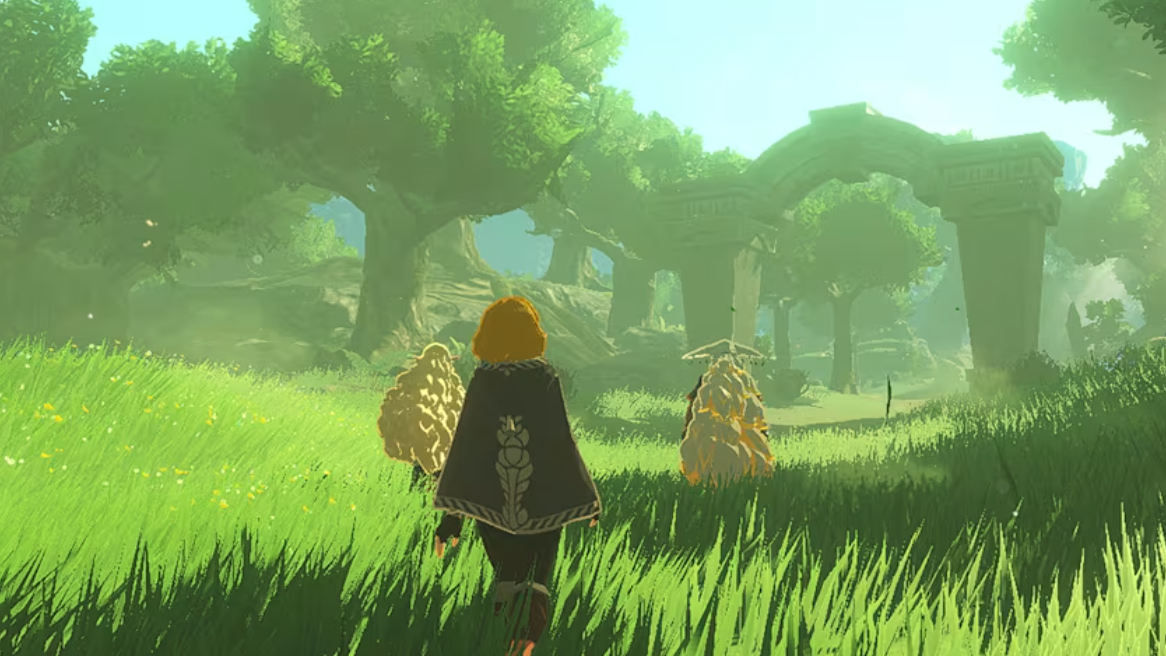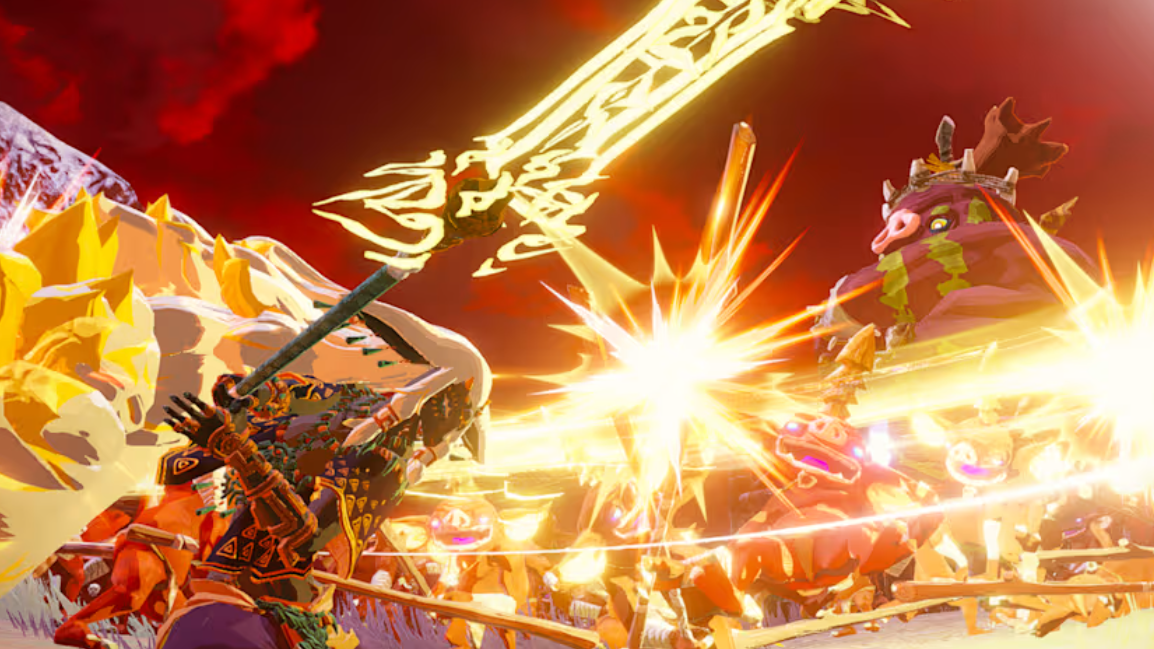Hyrule Warriors: Age of Imprisonment puts a spotlight on a new Korok named Calamo, introduced as a lively wanderer searching for a place to set down roots. With launch chatter circling around November 6, the question many players keep returning to is simple and loaded: is this cheerful companion destined to become the Great Deku Tree?
What’s confirmed about Calamo
Calamo is presented as an energetic Korok who roams Hyrule looking for a permanent home. He’s positioned as a playable warrior in Age of Imprisonment, and early materials frame him as a personality-forward foil to a mysterious construct partner — the kind of yin‑yang pairing this series has used before to lighten the tone while anchoring key story beats. That’s the solid ground: a boisterous Korok, mobile, questing for roots, and involved enough to justify a full move set.
Who the Great Deku Tree is (and why that matters)
The Great Deku Tree is one of Zelda’s most enduring figures. Across entries, this immense forest spirit is:
- Guardian and mentor to the forest’s childlike denizens (including the Koroks in several eras).
- A protector whose wisdom and age are measured in millennia, not years.
- The keeper of crucial relics and places — most notably the Master Sword’s sanctuary in Breath of the Wild and Tears of the Kingdom.
In The Wind Waker, the Great Deku Tree sends Koroks across the sea to plant new Forest Trees, both to expand woodlands and to sustain his own power. That detail underscores a core theme: the Deku Tree’s strength and purpose are entwined with growth, seeding, and stewardship. It also shows there isn’t just one immutable “Deku Tree.” The character recurs over ages and timelines, sometimes with a clear successor (as with the sprout that follows the Ocarina of Time era), suggesting a mantle that can be passed, reborn, or re‑rooted.

Why players connect Calamo to the Great Deku Tree
Several cues nudge fans toward the theory that Calamo could be a proto–Deku Tree:
- The “search for a place to put down roots” language reads like a narrative seed. Koroks are plant spirits, but “roots” is specifically arboreal, and the Deku Tree is the apex of that idea.
- Story structure precedent: a seemingly light character that becomes pivotal (think how companion figures in Warriors titles often anchor twists or epilogues).
- Series continuity: different eras host different iterations of the Deku Tree. A new origin path is plausible within the series’ flexible lineage.
The tonal mismatch — Calamo’s boisterous energy versus the Deku Tree’s measured wisdom — isn’t a blocker. Zelda frequently uses time and transformation to shift characterization. A sprightly wanderer maturing into a solemn guardian fits the series’ arc of growth and duty.
Competing reads from early spoilers
Community chatter splits in two directions:
- Calamo becomes the Great Deku Tree specifically tied to the Breath of the Wild/Tears of the Kingdom era.
- Calamo is instead linked to another forest entity, such as an “ancient tree stump,” separating his fate from the Deku mantle.
These are fan claims pulled from early discussion and should be treated as unverified without explicit in‑game confirmation. Both interpretations try to reconcile Calamo’s “roots” framing with the series’ branching timelines and multiple forest guardians.
How each theory fits (or strains) the lore
| Claim | What supports it | Counterpoints to consider |
|---|---|---|
| Calamo becomes the Great Deku Tree (BotW/TotK era) | “Roots” motif aligns with a guardian tree’s origin; multiple Deku Trees exist across eras, so a distinct lineage is plausible. | Tonally distant from the wise, reserved spirit; risks muddling how the Deku mantle transfers compared with past successions. |
| Calamo is tied to an ancient tree/stump, not the Deku mantle | Allows Calamo to remain significant without inheriting the title; keeps the Deku lineage separate and more traditional. | Undercuts the narrative weight suggested by the “put down roots” setup if it doesn’t culminate in a guardian role. |
| No direct lineage — Calamo stays a Korok warrior | Preserves his established personality and mobility; keeps the Deku Tree’s origin off-screen and mythic. | Leaves the “roots” teaser as flavor rather than payoff; misses a clean bridge into later-era forest leadership. |
The Deku Tree’s mantle is a moving target
It helps to think of “the Great Deku Tree” less as a single, continuous being and more as a title carried by a great forest spirit tied to a place and a people. Zelda already shows successor trees and era‑specific guardians. Within that frame, Calamo could feasibly grow into a distinct Deku Tree separate from the Ocarina of Time lineage, aligning with the vast time gulf implied before Breath of the Wild. Alternatively, the game may choose to expand Hyrule’s forest pantheon with other ancient trees that complement, but don’t merge into, the Deku mantle.

What to watch for in Age of Imprisonment
If the game intends to answer the question directly, the clearest signals would be story moments that:
- Bind Calamo to a specific sacred site (a forest haven or sanctuary) with permanent, rooted imagery.
- Transfer a protective duty over Koroks or a named forest, establishing leadership rather than companionship.
- Use epilogue or post‑credits material to timeskip toward a mature form or title.
Expect the resolution, if any, to be framed as growth and responsibility rather than a sudden transformation. The Deku Tree’s role is less about power and more about stewardship — a tone shift that typically lands at the end of a journey.
Right now, the only firm detail about Calamo is the setup: a spirited Korok searching for a place to take root. The rest is informed reading of familiar Zelda patterns — multiple forest guardians across eras, successors stepping into old roles, and a series that loves turning small, earnest characters into linchpins. Whether that path ends with the Great Deku Tree’s title or branches to a different ancient guardian, the groundwork is there for Calamo to matter long after the battlefields go quiet.


